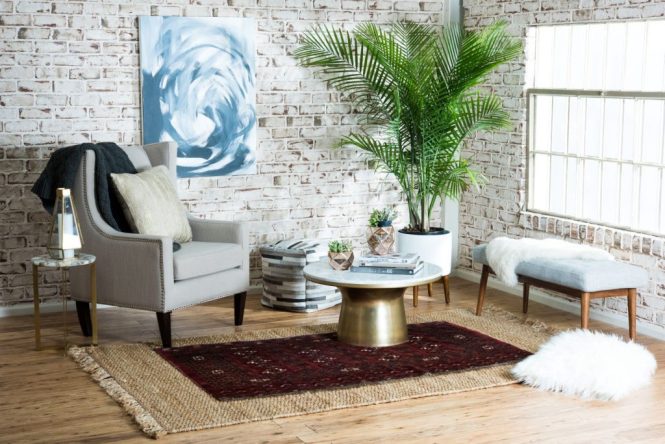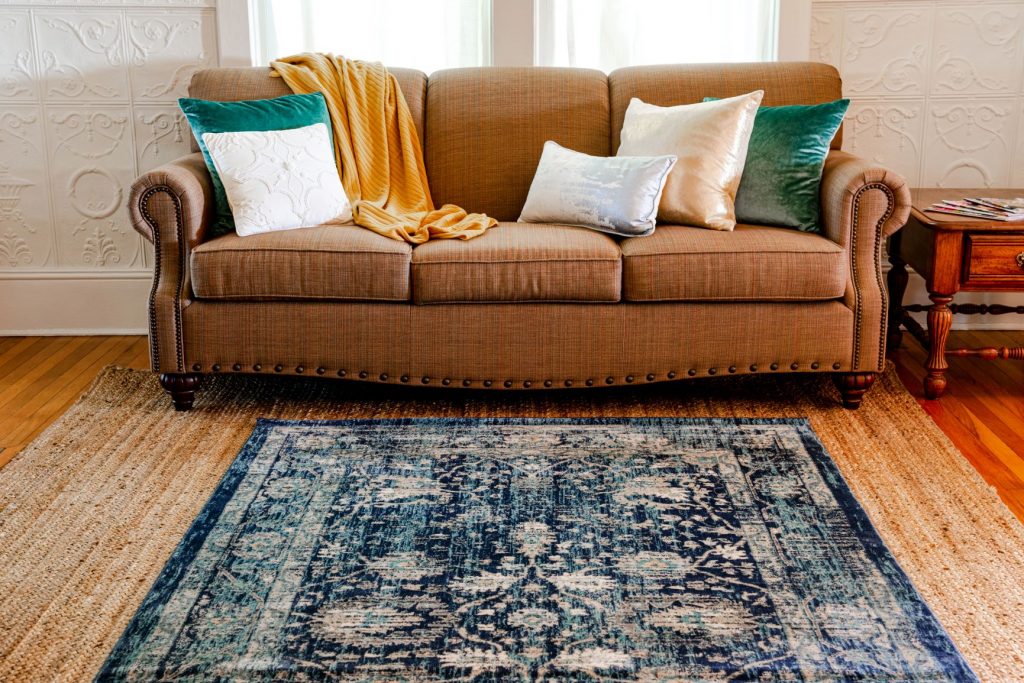

Layering rugs is a simple yet effective design technique that can dramatically enhance the look and feel of any room. Imagine walking into a space where the floor isn’t just a floor, but a carefully curated landscape of textures and colors. This is the magic of layered rugs. Many homeowners struggle to create visual interest and depth in their living spaces, often feeling overwhelmed by the sheer number of design choices. They might feel their rooms lack personality or a cohesive style. This article will explore the numerous benefits of layering rugs, providing you with practical tips and tricks to effectively incorporate this technique into your home. We’ll cover everything from choosing the right rug sizes and textures to understanding the principles of color coordination, offering a step-by-step guide to transform your floors from bland to grand.
The Art of Layering Rugs: Creating Visual Depth
Understanding the Basics of Rug Layering
Layering rugs is more than just throwing a few rugs on top of each other; it’s a carefully considered design process that involves selecting rugs with complementary colors, patterns, and textures to create a visually appealing and harmonious look. The key is to achieve balance and avoid a cluttered appearance. Choosing the right sizes and shapes is also crucial, ensuring a cohesive and well-proportioned space. When done right, layering rugs can offer a sense of warmth, coziness and even sophistication. It allows for the expression of creativity and personal style within the home. This process can take time, but the outcomeing improvement in a room’s design can be well worth the effort.
Choosing the Right Rugs for Layering
selecting the right rugs for layering involves considering the size and shape of your existing space, the existing color palette, and the overall style you wish to achieve. For example, a large, neutral-colored rug might serve as a foundation, upon which smaller rugs with vibrant patterns or textures can be layered, adding visual interest without overwhelming the space. Consider using natural fibers like jute, wool, or cotton for a more organic, textured look, or opt for synthetic materials for durability and ease of maintenance. This process enables homeowners to blend a variety of elements to create a unique and personalized effect. varied materials add unique textures which can be very attractive. This technique elevates the floor design to a significant piece of the overall design.
Enhancing Texture and Comfort with Layered Rugs
The Play of Textures: A Multi-Sensory Experience
One of the most significant benefits of layering rugs is the ability to introduce a captivating interplay of textures. Combining a plush, high-pile rug with a flat-weave rug, for instance, creates a multi-sensory experience that adds both visual and tactile interest. This layering approach is ideal for bedrooms or living rooms, where comfort and tactile appeal are highly valued. varied textures contribute to a warm and welcoming atmosphere which can make the room feel more personal and inviting. The key is to select textures that complement each other rather than clashing, creating a balanced and visually pleasing effect. Careful consideration should also be given to texture placement within the room, ensuring the varied textures contribute to a unified design rather than a mismatched look.
Adding Depth and Dimension through Texture
The strategic use of contrasting textures can dramatically add depth and dimension to a room. A low-pile rug can define a specific area, while a high-pile rug layered on top can create a focal point that draws the eye. This layering approach is particularly effective in larger rooms or open-plan living spaces, where the use of texture can help to define varied zones without physically dividing the space. You can use varied textures to delineate spaces, adding depth and sophistication to the environment. By carefully selecting rugs with varied textures, the homeowner can create a visual focal point, emphasizing specific areas of the room. This method can add dynamism and personality without requiring significant structural changes to the space.
Defining Zones and Spaces with Layered Rugs
Creating Distinct Areas in Open-Plan Living
In open-plan living spaces, layering rugs is a fantastic way to delineate varied zones without resorting to physical dividers. For instance, you could use a large rug to define the seating area, a smaller rug in front of a fireplace, and a runner in the hallway or entryway. This approach not only adds visual interest but also helps to create a sense of order and organization in a spacious area. varied sized rugs, combined with varied textures, can create a more dynamic and engaging atmosphere. You can use rugs to create a sense of distinct spaces within the home, emphasizing functional areas without sacrificing the airy openness of an open-plan design.
Zoned Layering for Enhanced functionality
Layered rugs are also an ideal solution for defining separate areas within a single room that serve distinct purposes. For example, in a child’s bedroom, a larger rug under the bed could anchor the sleeping space, while a smaller rug can be used to create a play area. Similarly, a rug placed in front of a vanity or dresser adds both style and functionality to a dressing area. This method is practical, functional, and visually appealing. This simple addition can make a significant improvement in the overall design of a room. It offers a simple and economical method to personalize and enhance the room’s aesthetics.
Color Coordination and Pattern Play in Layered Rugs
The Power of Color Harmonies
Color coordination is critical in achievementful rug layering. You can create a harmonious look by selecting rugs with colors that complement each other on the color wheel, such as analogous colors (colors that are next to each other on the wheel) or complementary colors (colors that are opposite each other). If you’re feeling adventurous, you can try using a bold color as an accent. Careful color planning can make the room look bigger and more dynamic. A well-chosen color scheme can significantly improve the mood and feeling of the space. You can create a warm, inviting atmosphere with earth tones or add a sense of energy with bright colors.
Playing with Patterns and Prints
Layering rugs also offers opportunities to incorporate interesting patterns and prints. You might layer a solid-colored rug with a rug featuring a geometric pattern, a floral motif, or an abstract design. The key is to ensure that the patterns complement each other rather than clashing. For a more balanced look, it is often wise to combine a bold pattern with a more neutral base. This technique adds a sense of excitement and individuality to any interior design. It offers a way to easily update and refresh the décor of your home. The use of patterns and prints adds personality and individuality to the layered rug design, making it a fun and personalized way to decorate.
Choosing the Right Size and Shape for Layered Rugs
Proportions and Placement
When layering rugs, it’s crucial to consider the size and shape of your rugs in relation to the size and shape of your room. A general instruction is to have the larger rug define the main space, with smaller rugs layered on top or beside to create visual interest and define smaller areas. A good idea is to ensure that at least the front legs or all the legs of your furniture are on the main rug. This rule makes the room feel more balanced and organized. Proportions and placement play a key function in determining the visual appeal and overall balance of the room.
Layering Shapes and Sizes
Experimenting with varied shapes and sizes of rugs can lead to fascinating design outcomes. You could layer a rectangular rug with a round rug or a square rug, adding visual complexity and charm. The key is to balance the shapes and sizes so the overall look is cohesive and well-proportioned. Carefully selecting shapes and sizes can complement the design of your furniture and overall room decor. Layering shapes and sizes helps to maintain visual balance and symmetry, creating a harmonious and aesthetically pleasing interior.
In conclusion, layering rugs offers a surprisingly multifaceted approach to enhancing your home’s interior design. By understanding the benefits of layering rugs for depth and texture, you can elevate the visual appeal of any room. Remember, the key is to experiment with varied colors, textures, and sizes to achieve the perfect layered look. Don’t be afraid to try out varied combinations to find what works optimal for you and your space. Start layering rugs today and transform your home into a stylish and comfortable haven!